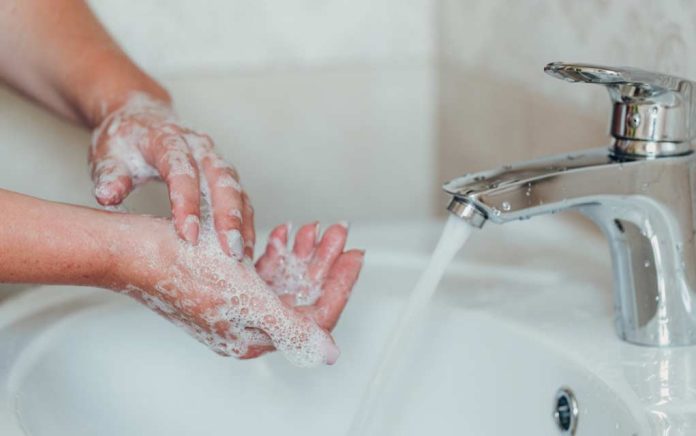
(HealthyResearch.com) – We touch and handle objects all day, often not considering who else may have had contact with them. Many of us have become accustomed to slathering on hand sanitizers in response to any potentially germy situation, not really thinking twice about it.
But is that really the healthiest way to stay protected against disease-causing germs? Turns out that many of us have been doing hand hygiene all wrong. Here’s how to make sure you’re doing it right.
Soap and Water vs Hand Sanitizer
The Centers for Disease Control and Prevention (CDC) recommends good, old-fashioned soap and water for most hand-cleaning purposes. This is because hand sanitizers can’t remove dirt, chemicals and other debris like soap and water can. They also aren’t effective against every strain of every pathogen.
Hand sanitizer is ideal if using soap and water isn’t an option. The CDC recommends using a hand sanitizer containing at least 60% alcohol when you can’t get to a sink.
How to Wash Your Hands Properly
Even those of us who opt for soap and water over hand sanitizer might not be doing enough to protect ourselves against disease-causing germs. It’s important to know how to wash your hands effectively.
The World Health Organization (WHO) offers an illustrated tutorial on getting a good, thorough scrub. Here’s the breakdown:
- Wet your hands and give yourself enough soap to lather well.
- Rub your palms together.
- Cross one hand over the other and interlace your fingers, scrubbing the knuckles, back of the hand and between fingers. Switch hands.
- Clasp hands facing together and interlace again to clean between the fingers.
- Scrub the fingertips and beneath the nails.
- Rinse both hands thoroughly. Use a towel when you turn off the faucet.
- Dry hands with a clean towel.
This process should take 15 to 30 seconds, according to the CDC. Tell children to lather their hands long enough to sing the “Happy Birthday” song twice. Be sure to use cool or warm water — hot water doesn’t provide any additional benefits and may be damaging to the skin.
Pros and Cons of Hand Sanitizer
Alcohol-based hand sanitizers are effective against numerous pathogens, including the flu and certain viruses and bacterias. Ethanol sanitizers are more effective than hand-washing when it comes to protecting against rhinoviruses — one cause of the common cold.
Despite their advantages, hand sanitizers do have some serious limitations. The biggest is the list of pathogens they don’t work against. A German Medical University study found them to be ineffective against poliovirus, calicivirus, polyomavirus, hepatitis A and the virus responsible for foot-and-mouth disease. A report from Penn State College of Medicine found they did nothing against human papillomaviruses, allowing for the virus to be non-sexually transmitted. Hand sanitizers may also be less effective against Clostridium difficile, which can cause potentially deadly gastrointestinal infections. Some researchers believe hand sanitizer use could even promote norovirus outbreaks.
If you do use a hand sanitizer, make sure you understand its limitations and use the product properly. The WHO advises taking similar measures to handwashing to ensure complete coverage, making sure not to miss areas between the fingers and under the nails.
Especially when the risk of infection is high, proper hand hygiene is vital to staying well. Wash your hands thoroughly whenever you come into contact with a potentially contaminated surface. When you can’t wash, and when you know it will be effective, consider using a hand sanitizer instead. It could be your saving grace the next time a nasty bug enters your neck of the woods.
~Here’s to Your Health & Safety!
Copyright 2021, HealthyResearch.com
















